The Prophet’s Spiritual State at the Time of His Mission
This paper discusses the part of the life of the Prophet wherein all of the aims of the Prophet’s apostleship and all of his teachings are concentrated. Those who believe in the doctrine of prophethood acknowledge that it is a divine duty and a mission from God. They consider that God appointed it to those whom He selected from among His good servants, from those who were exalted among mankind.  They believe that Allah sent the Prophets to teach people wisdom
They believe that Allah sent the Prophets to teach people wisdom

and knowledge and the ways of happiness and goodness. [1]
Revelation is one of the most important basis upon which the ideology of religious truths, realities and teachings is constructed. [2] In other words, with Revelation “God prepares His prophet to receive from Him the highest cosmic truths that he may convey them to mankind.” [3] Both remarks imply the same concept that is to say that all of the basic premises of a religion such as Islam should have come through revelation.
Muslim scholars and biographers believe that the Mission of the Prophet began with a revelation which was sent from God through His angel Gabriel. [4]
If so, the Prophet’s Mission occupies the first position in his life. This is the common beliefs of all Muslim biographers, though, as we will see later, there may be differences between their attitudes on the issue of the Mission. In the present discussion, the spiritual and psychological state of the Prophet at the time of his Mission will be analyzed from the point of view of biographers. Here the following issues will be of concern
1- The date of the Mission which is a Sunni and Shi’i debate.
2- The specific circumstances of the Mission, such as how prophethood began i.e., in sleep or through true visions. Did the Prophet tremble with fear when he received the revelation
Where and When the Mission Occurred
As depicted in hadith and sirah sources, there is no doubt that the cave in Mount Hira-‘, two miles north of Mecca, was the place where the first divine message was sent down. [5] The perfect silence of the cave with its total separation from Mecca, provided a comfortable location for worship and retreat. [6] Also, there is no disagreement that the Mission happened when Muhammad was forty years old. [7] It is said “When Muhammad retreated into the cave of Hira-‘ as he approached the fortieth year of his age, his soul was fully convinced of the vision of truth he had seen.” [8]
All in all, most Sunnis agree that the Prophet’s Mission took place in the month of Ramadan, [9] yet the specific day in Ramadan is a subject of disagreement among them. According to what Tabari and later on Majlisi related, those who favour Ramadan can choose among three different dates, based on three groups of hadith the seventeenth, the eighteenth, or the twenty-fourth. Still other Sunni traditions state that the Mission took place in Rabi’ al-Awwal. [10]
Contrary to most Sunnis, the Shi’i traditionists and biographers assigned -or as Majlisi states, came to the consensus that- the twenty-seventh of the month Rajab as the specific day and month of the Mission. This idea is found among some Sunni traditions as well. [11]
We accept the evidence for the twenty-seventh of Rajab which is related from the Imams of Ahl al-Bayt (the family of the Prophet, peace be upon them), since the descendants of the Prophet knew the Prophet’s personal affairs and his sayings better than others, that is to say the people of a house know better what occurs in the house. They state that the Mission was announced on the 27th of Rajab. This is what the vast majority or as Majlisi states, the consensus of Shi’i scholars agree with.
One would say that there is no problem in accepting that the Prophet began to receive his prophecy in Rajab in preparation for the reception of the Qur’an later on in Ramadan. This preparedness is something which is understood from the Qur’an itself, ”Surely We will cast weighty statement on you.” [12]
Accordingly, the Qur’an was sent down gradually in Ramadan. This conclusion is supported by a narrative according to which the angel of the revelation used to come to the Prophet and show himself to him before the Qur’an was sent down to him. [13] Thus, one may distinguish between the beginning of the mission which took place on the 27th of Rajab and the revelation of the entire Qur’an in the month of Ramadan.
The Beginning of the Revelation
A True Dream or a True Vision
Relying on what is related through Ibn Ishaq [14] and Ibn Kathir, [15] some Sunni thinkers have come to the conclusion that the revelation began with the Prophet’s dream which occurred when he was asleep in the cave at Hira-‘. For instance, Haykal says, “One day, while Muhammad was asleep in the cave, an angel approached with a sheet in his hand.” The angel asked Muhammad to read. [16]
A. Wessels, discussing this point, says, “According to Haykal, Muhammad believed strongly in what he had seen in his ‘dream’.” [17] Haykal refers to another possibility which is suggested by some narrators of hadith and says, “Some of them have claimed that the beginning of revelation was in the hours of wakefulness, and they mention a hadith to the effect that Gabriel first said words of reassurance to assuage Mohammad’s fear at his appearance.” [18] Haykal then states In his al–Kamil fi al-Tarikh, [19] Ibn Kathir gave a quotation from the book, Dala’il al-Nubuwwah by Abu Na’im al-Isbahani, in which the latter reported that ‘Alqamah b. Qays had said, ‘The first revelations came to the prophets in their sleep until their hearts were reassured.’ [20]
This point is also remarked upon by Bukhari. Regarding the beginning of the revelation, he related hadiths, among which one is as follows ”The commmencement of the Divine inspiration to Allah’s Apostle was in the form of good dreams which came like bright day light (i.e. true)…” [21]
The Shi’a thinkers, for their part, are quite clear that the first revelation occurred when the Prophet was praying in the cave. This revelation, descending to the prophet in his perfect awareness, began with the Almighty God’s words, ”In the Name of Allah the Beneficent the Merciful. Read in the Name of your Lord Who created. Who created man from a clot.” [22]
This is what has been received from the Imams of the Ahl al-Bayt and others. [23]
The Psychology of the Prophet When He Received the First Revelation
Ibn Ishaq as well as other Sunni narrators of hadith and biographers describe the state of the Prophet when he received the first revelation. [24] Haykal, for example, paraphrases the story as follows Stricken with panic, Muhammad arose and asked himself ‘What did I see Did possession of the devil which I feared all along come to pass’ Muhammad looked to his right and his left but saw nothing. For a while he stood there trembling with fear and stricken with awe. He feared the cave might be haunted and that he might run away still unable to explain what he saw. He walked in the area around the mountain asking himself who could have commanded him to read. …
who was this who came to remind Muhammad of Him, that He had created man, and that He was the most gracious who taught man by the pen that which he does not know Pursued by his own questioning and still trembling in fear of what he had seen and heard in the cave, Muhammad stopped in the middle of the road when the same voice called to him from above. Mesmerized in his place, Muhammad lifted his head toward heaven.
He saw the angel in the form of a human giant across the sky. For a moment he sought to escape, but wherever he looked or ran, the angel stood right there before him. … Muhammad returned home once the angel disappeared. His state was one of extreme dread. …As Muhammad entered his house he asked Khadijah to wrap him in blankets. She could see that her husband was shivering as if struck with high fever. When he calmed down, he cast toward his wife the glance of a man in need of rescue. [25]
The image of the Prophet shown in the mirror of these ancient texts has not been commented on nor criticized by Sunni biographers. The Shi’i scholar Ja’far Subhani, [26] in his biography of the Prophet, says that it is surprising that Dr. Haykal, despite the well-managed preface to his book of the sirah, relates the same fabricated materials which are seen in the ancient books of hadith and sirah. Haykal believed that a lot of slander and lies were unjustly attributed to the Prophet, so he set out to purify the image of the sirah from such defamations. [27]
As Wessels points out, “He wished to develop an image of Muhammad that would be acceptable primarily to modern educated Muslims, who in his view, needed to return to their own heritage.” [28]
Moreover, refuting the slander of epilepsy which is attributed by some Orientalists to the Prophet, Haykal, before coming to the section of the Mission, i.e. in his preface to the second edition of his biography of the Prophet, insists This was not the case at all with the Prophet at the moment of revelation, for his cognitive faculties used to be strengthened -rather than weakened- and do so to a superlative degree hitherto unknown by the people who knew him most. Muhammad used to remember with utmost precision what he received by way of revelation … [29]
It is also stated by Haykal [Before the time of the Mission,] Muhammad began to see in his dreams visions of the truth he sought. Contrasted with these visions, the illusory character of this life and the vanity of its ornaments became especially apparent. He had become perfectly convinced that his people had gone utterly astray and that their spiritual lives had been corrupted by their idols and the false beliefs associated with them. He was also convinced that neither the Jews nor the Christians had anything to offer that would save his people from their misguidance. [30]
Accordingly, Mohammad’s dreams gave him information about the truth he sought, and as a result he was perfectly convinced that his people were in need of a saviour who supposedly was none other than himself.
However, the above-mentioned passages portray a very different image from the one which Haykal depicts of the Prophet’s state of mind at the outset of his Mission. Haykal’s description of Mohammad’s receiving of prophecy implies that he was astonished by an agent who appeared to him to be strange and fearful. Here, the Prophet felt discomfort in the face of this first inspiration, as if he had passed through a time of great distress of the soul. Seen from this perspective, the Prophet seems to have been an uncertain, anxious, sad, and wondering man who trembled with fear, and who was in need of rescue by a person, supposedly, his wife Khadijah or her cousin Waraqah. Such narratives speak of the Prophet’s sense of unworthiness, his doubts and fears, and the difficulties of his mission. [31]
Furthermore, Bukhari in his Sahih, states that the story of the first revelation begins with what is related on the authority of al- Zuhri from ‘Urwah b. Zubayr, from ‘A’isha, who narrated,
The commencement of the divine Inspiration to Allah’s Apostle … was in the form of good dreams which came like bright daylight (i.e. true) and the love of seclusion was bestowed upon him. He used to go into seclusion in the cave of Hira-‘ where he used to worship (Allah alone) continuously for many days before his desire to see his family. … till suddenly the truth descended upon him while he was in the cave of Hira-‘. The angel came to him and asked him to read. The Prophet replied, “I do not know how to read.” [32]
According to this narrative, this incident occurred three times; each time the angel seizing Muhammad forcibly and pressing him so hard that he could not bear it any more. He then released him and again asked him to read and the Prophet replied, “I do not know how to read.” Finally, the angel said, “Read, in the Name of your Lord, who created, created man from a clot. Read! And your Lord is the most Generous.” [33]
A’isha continued, Then Allah’s Apostle … returned with the Inspiration and with his heart beating severely. Then he went to Khadijah bint Khuwaylid and said, “Cover me!” “Cover me!” She covered him till his fear was over and after that he told her every thing that had happened and said, “I fear that something may happen to me.” Khadijah replied, “Never! By Allah! Allah will never disgrace you…” Khadijah then accompanied him to her cousin Waraqah bin Nawfil bin ‘Abdul ‘Uzza, who during the pre-Islamic period became a Christian and used to write the writing with Hebrew letters. … Allah’s Apostle … described whatever he had seen. Waraqah said, “This is the same one … (Gabriel) whom Allah had sent to Moses.” [34]
Contrary to what is stated by Haykal and some other Sunni scholars, the Shici description leaves no room for any of the afore-mentioned conditions attributed to the Prophet when he received the first revelation. Rather, it is insisted that the revelation was sent to the Prophet when he was fully aware and conscious. He saw and understood what was happening without any fear or doubt.
There are some other narratives concerning this issue of the very beginning of the Mission; nevertheless, all contradict each other in both verbal and conceptual aspects. One of the common ideas of this group of narratives is that they explain the roles of Khadijah, of her cousin Waraqah and of other monks named ‘Addas, Nastur and Bahira-‘. They illustrate how these monks, especially Waraqah, played an important role in the certification and approval of Mohammad’s prophecy.
Such narrations can be evaluated from several aspects
1- The disputable chain of narration The most distinguished individuals among the chains of authority are people such as al-Zuhri and ‘Urwa ibn Zubayr. [35] Al-Zuhri was one of the supporters of the Umayyad dynasty upon whom he used to rely. He was in the court of Hisham b. ‘Abd al-Malik and served him as his ka-tib (scribe and recorder), and as his children’s teacher. [36] ‘Urwa ibn Zubayr was one of the Ta-bi’in, who had not seen the Prophet, but had seen some of his companions. He was also in close relation with Umayyads. [37]
Furthermore, it is not proved that al- Zuhri related from ‘Urwa, even though some narrationists have accepted this as being the case. [38] It should also be noted that ‘Aishah is the first person in the chain of narration in most of these narratives. She is the authority by whom the other authorities relate. However, she was born some years after the Mission had started; therefore, she could not be an immediate narrator of the details of the beginning of the Mission. In other words, she should relate on the authority of someone else, whose name is not mentioned. Thus, the quote above should be regarded as a ‘mursal’ i.e. a hadith that lacks the first immediate authority or authorities. [39] The validity of this kind of narrative is usually less than an authentic one whose authorities are all known and approved. [40]
2- Contradiction among all narratives These narratives differ from each other, to greater or lesser extents in both verbal and conceptual content. This contradiction and inconsistency suggests that there was an attempt deliberately to fabricate untrue stories and anecdotes and attribute it to important personalities like ‘Aishah, the wife of the Prophet. [41] This was undertaken by the Umayyads for political purposes, as one observes in their treatment of the Prophet and his Household. [42]
3- Gabriel and his threatening the Prophet It is not clear why the Prophet should have been threatened by the angel Gabriel. Why should the angel bother him and put him under so much stress and pressure that he imagined he was going to die Why did the angel treat him oppressively and without any mercy or flexibility, even when he saw that Muhammad was incapable of doing as he was commanded
4- The role of the monks and Khadijah When a researcher considers the role of the Prophet’s wife and that of Waraqah (or others), he will be concerned with two points
a How can a person be the prophet of God while at the same time be ignorant of his prophecy or of his mission, and in need of the help of a woman or of some monks to guide him and calm him Weren’t these guides and helpers more deserving and more appropriate for prophecy than a fearful, doubtful man Why could he not perceive and recognize the facts just as this woman and this monk did [43]
How can one reconcile these opposing claims On the one hand, it is said that “The commencement of the divine inspiration to Allah’s Apostle was in the form of good dreams which came like bright day light (i.e. true).” [44] Ibn Ishaq for instance, relates that ”… the first sign of prophethood vouchsafed to the apostle was true vision, resembling the brightness of daybreak, which was shown to him in his sleep.” [45] According to another hadith, the Apostle at the time when Allah willed to bestow His grace upon him and endow him with prophethood, would go forth for his affairs and journey; and not a stone or tree he passed but would say, “Peace unto thee, O apostle of Allah.” [46]
However, on the other hand, there are narrators of hadith and biographers who show an image of the Prophet as a man who became doubtful, astounded, ignorant, anxious, etc. after the angel appeared to him at the moment of the revelation. None of these narrators tries to answer this question or to harmonize these two opposing passages of narrations and descriptions.
b There are some Qur’anic passages according to which God Himself is responsible for bracing the hearts of His Apostle and believers.
Say, ‘The holy spirit has brought it down as truth from your Lord to brace those who believe, and as guidance and good news for Muslims’. [47]
Those who disbelieve say, ‘Why has not the Qur’an been sent down to him in one single piece’ [It has been done] like that so your vitals may be braced by it; We have phrased deliberately. [48]
Also there are other verses that indicate the Prophet was following evidence from his Lord.
Say, ‘I am [looking] for evidence from my Lord while you have rejected it. I do not have what you are trying to hurry up; discretion lies only with God. he relates the Truth and is the best decider.’ [49]
Say, ‘This is my way. I and anyone who follows me, appeal to God through insight. Glory be to God! I am not one of the polytheists.’ [50]
Therefore, the prophecy and the descending of the Qur’an can be seen as having braced the Prophet’s and believers’ hearts. This is in contradiction with the allegation that his spirit was calmed by trusting in Waraqah’s assurance. [51]
But what is the fact In answering this question, and based on authentic narrations and rational arguments, we would say that Allah sent the first revelation down to the Prophet while he was in the cave. Then, being in good heart, he returned to his house rejoicing in the good tidings that Allah had given to him. He was certain about the important task which he was supposed to perform. When he was at home after the first revelation and shared the news with his wife Khadijah she believed in him and in what he brought. [52]
There is one hadith on the authority of Ibn Kathir that seems to be closer to what the Shi’a in general advocate. Ibn Kathir narrates that the Prophet returned to his family, sure that he had been commissioned to perform a great task. He told Khadijah what he had seen, explaining that Gabriel had truly come to him and that he had received his apostleship from his Lord. Khadijah replied, “Rejoice! By Allah, He does good to you. This is surely the Truth; Rejoice! You are the Apostle of Him in certain.” [53]
Imam Sadiq [54] said that Allah first selected one of His servants as His apostle. Then, He brought down upon him His immanence, peace, gravity and dignity so he would realize that what came to him was certainly from God not from Satan, and it would be the same as what he sees by his eyes. [55]
The same Imam was asked how prophets understood that they were the apostles of God, and he answered that at the time of their apostleship, God removed any cover from their eyes and insights. Thus, they were able to see the Truth and distinguish it from untruth. [56] Furthermore, Tabarsi states that Allah does not reveal to his Prophet except through brilliant shining proofs and evident obvious signs, all demonstrate that what was revealed was from Almighty Allah. Therefore, he never was in need of anyone else to guide him. [57]
In short, from the point of view of the Shi’a, there was no fear, nor anxiety from which the Prophet suffered due to the first revelation.
Summarizing Comments
1. We realized that Sunni and Shi’a thinkers in large are on two different sides in regard to the attributes and qualifications of the Mission. [58] Therefore, such a difference can be regarded as a Sunni- Shi’a dispute.
2. As we have seen, according to the Sunni account of the Prophet’s personality, there should be nothing destructive to the image of him if some fear, ignorance, anxiety, and doubtfulness have been attributed to him. That is to say, Mohammad’s life was a human life, and he was merely an ordinary man like other human beings except that the revelation was sent to him. “Like all men, Prophets are truly fallible; their distinction lies in that God does not leave them in their error. He corrects them and often even blames them therefore.” [59]
3. Contrary to this account, the Shi’a believe that God has never revealed His divine message to one of His fallible and imperfect servants, rather He selected the one whom He purified since the very beginning of his life. In keeping with this, they believe, that the Prophet Muhammad, while in essence a man like any other, yet was an exalted and infallible servant of God. In Shi’a tradition any kind of defect or error has been removed from the image of the Prophet, especially at the start of his Mission, for a messenger of God should be infallible. This is why the Shi’a never accept any of the defects which are attributed to the Prophet. Muzaffar, a Shi’i theologian, maintains
The reason for the necessity of the infallibility of a prophet is that if he commits a sin or mistakes, or is forgetful or something similar, we have to choose between two alternatives either we obey his sins and mistakes, in which case in the view of Islam, we do wrong, or we must not obey his sins and mistakes, which too is wrong, because, if everything he says or does has the possibility of being either right or wrong, then it is impossible for us to follow him. The result is that the benefit of his mission is lost; it becomes unnecessary, and the prophet becomes like ordinary people whose acts and speech do not have the excellent worth that we seek. [60]
Bibliography
1. The Quran.
2. Bukhari, Abu ‘Abdullah. Sahih al-Bukhari. vol. 1, Misr Maktabat ‘Abd al-Hamid Ahmad Hanafi, 1896
3. Bukhari, Abu ‘Abdullah. Sahih al-Bukhari, [Arabic-English]. translated by Muhammad Muhsin Khan. vol. 1, al-Madinah al-Munawwarah Islamic University, 1971.
4. Haykal, Muhammad Husayn. Hayat Muhammad. 5th ed. Cairo Maktabat al-Nahda al-Misriyya, 1952.
5. Haykal, Muhammad Husayn. The Life of Muhammad. Translated from the 8th Edition of Hayat Muhammad by Isma’il Ragi A. al-Faruqi. North American Trust Publication, 1976.
6. Ibn Hisham, Abu Muhammad ‘Abd al-Malik. Al-Sirah al-Nabawiyyah. Vol. 1, edited by ‘Umar ‘Abd al-Salam Tadmuri. Beirut Dar al-Kitab al-‘Arabi, 1987.
7. Ibn Ishaq, Muhammad. The Life of Muhammad. Translated into English by Alfred Guillaume. Oxford Oxford University Press, 1955.
8. Ibn Kathir, Isma’il Abu al-Fida’. Al-Bidayah wa al-Nihayah. Vols. 1, 2 & 3, edited by Ahmad Abu Muslim et al. Beirut Dar al-Kutub al-cIlmiyya, 1985.
9. Ibn Kathir, Isma’il Abu al-Fida’. Al-Sirah al-Nabawiyyah. Vol. 1, edited by Mustafa ‘Abd al-Wahid. Beirut Dar Ihya’ al-Turath al-‘Arabi, 1980.
10. Majlisi, Muhammad Baqir. Bihar al-Anwar. Vols. 11, 15, 18 & 46. Beirut al-Wafa’, 1983.
11. Majlisi, Muhammad Baqir. The Life and Religion of Muhammad. English translation of Vol. 2 of Hayat al-Qulub, by James L. Merrick, San Antonio Zahra Trust, 1982.
12. Mudir Shanichi, Kazim. cIlm al-Hadith wa Dirayat al-Hadith. 3rd ed. Qum Daftar Intisharat Islami, 1990.
13. al-Murtada al-‘Amili, al-Sayyid Ja’far. Al-Sahih min Sirat al-Nabi al-Aczam. 2nd. ed. Vols. 1 & 2, Qum 1983.
14. al-Murtada al-‘Amili, al-Sayyid Ja’far. Al-Sahih min Sirat al-Nabi al-Aczam. Preface to the third edition, unpublished, July 1993.
15. al-Murtada al-‘Amili, al-Sayyid Ja’far. Dirasat wa Buhuth fi al-Tarikh wal-Islam. 2nd. ed. Vol. 1, Qum 1983.
16. al-Muzaffar, M. Rida. The Faith of Shica Islam, 2nd edition, Qum Ansariyan Publications, 1986.
17. Subhani, Ja’far. Furugh Abadiyyat. Vol. 1. Qum Daftar Tablighat Islami, 1993.
18. al-Tabari, Abu Ja’far Muhammad b. Jarir. Tarikh al-Rusul wal-Muluk. 5th edition. Vol. 2, edited by Muhammad Abu al-Fadl Ibrahim. Cairo, Dar al-Ma’arif, 1977.
19. Tabarsi, Abu ‘Ali al-Fadl b. al-Hasan. Majmac al-Bayan fi Tafsir al-Qur’an. Vols. 3 & 5. Qum Maktabat, Ayatullah al-Mar’ashi, 1983
20. Wessels, Antonie. A Modern Arabic Biography of Mohammad A Critical study of Muhammad Husayn Haykal’s Hayat Muhammad. Leiden E. J. Brill, 1972.
Notes
[1] Al-Muzaffar, The Faith of Shica Islam, second edition (Qum Ansariyan Publications, 1986), p. 17.
[2] Murtada, al-Sahih, Vol. 1, p. 234.
[3] Hayakl, The Life, p. ixxiii.
[4] Ibid., p. 197 ; Haykal, Hayat, p. 133. The Mission began with the following verses In the name of Allah the Compassionate the Merciful ”Read in the name of your Lord the Creator; Who created man from a clot; Read, your Lord is most Generous …” (The Qur’an, 96 1-3)
[5] Ibn Hisham, Al-Sirah, Vol. 1, p. 263 ; Haykal, The Life, p. 70 ; Murtada, Al-Sahih, Vol. 1, p. 192 etc.
[6] Haykal, The Life, p. 70.
[7] Ibn Hisham, al-Sira, Vol. 1, p. 293 ; Haykal, The Life, p. 70 ; Murtada, al-Sahih, Vol. 1, p. 197 etc. Al-Tabari, in his history, mentions three sayings concerning the age of the Prophet at the time of the Mission. Besides those that say that Muhammad was forty when the first revelation came down to him, there is one hadith that advocates that the Prophet was forty three, and another that selects twenty as his age when he became the Apostle of God. See al-Tabari, Tarikh, Vol. 2, pp. 290-292.
[8] Haykal, The Life, p. 73.
[9] Ibid., p. 70; Murtada, al-Sahih, p. 192
[10] Tabari, Tarikh, Vol. 2, p. 293 ; Majlisi, Bihar, Vol. 15, p. 190 ; Murtada, al-Sahih, Vol. 1, p. 192.
[11] Murtada, Al-Sahih, Vol. 1, p. 192, quoting from Halabi, al-Sira, Vol. 1, p. 384, and Majlisi Bihar, Vol. 18, pp. 190 & 204.
[12] The Qur’an, 73 5.
[13] Murtada, Al-Sahih, Vol. 1, p. 195.
[14] Ibn Hisham, Al-Sirah, Vol. 1, p. 267.
[15] Ibn Kathir, Al-Sirah, Vol. 1, pp. 387-388.
[16] Haykal, The Life, p. 73.
[17] Wessels, Biography, p. 55.
[18] Haykal, The Life, p. 74.
[19] In Haykal’s Hayat, p. 133, footnote # 2, it is mentioned that Ibn Kathir, in his Tarikh, cites al-Hafiz Abu Na’im . The reference should be to Al-Sirah al-Nabawiyyah and not to Al-Kamil fi al-Tarikh since the latter is written by Ibn Athir and not by Ibn Kathir. This is apparently a mistake either by the author or by the translator. In all events, the above-mentioned passage is in fact cited from Ibn Kathir’s Sirah, Vol. 1, pp. 387 & 388.
[20] Ibid.; Hayat, p. 133, footnote.
[21] See Bukhari, Sahih al-Bukhari, (Al-Madinah Islamic University, Arabic-English edition translated by Muhammad Muhsin Khan, 1971.) Vol. 1, p. 2-3, hadith 3.
[22] The Qur’an, 96 1-2.
[23] Murtada, Al-Sahih, Vol. 1, pp. 197 & 223.
[24] Nowhere in his Hayat Muhammad, does Haykal cite any reference on which he relies for his description. However, in the footnote, it is mentioned that Ibn Ishaq advocated the same idea and that the books of the sirah also reported the same. See Haykal, Hayat, p. 133, footnote 2.
[25] Ibid., pp. 74-75.
[26] Ja’far Subhani, a contemporary Shi’i scholar was educated in Qum under the supervision of some of the great ayatollahs, among whom was the late Imam Khomeyni. he is presently professor of jurisprudence, philosophy and theology in the Islamic Seminaries of Qum. So far, he has written a great number of books in different areas, among which are his two analytical volumes on the biography of the Prophet in Persian, entitled Furugh-i Abadiyat.
[27] Cf. Subhani, Furugh-i Abadiyat, eighth edition (Qum Summer 1993), Vol. 1, p. 228; Haykal, Hayat, p. 40.
[28] Wessels, Biography, p. 43.
[29] Ibid., the author’s preface to the second edition, p. lxxii.
[30] Haykal, The Life, p. 72.
[31] Ibid., pp.73-75.
[32] Bukhari, Sahih (Arabic-English edition), Vol. 1, pp. 2 & 3.
[33] The Qur’an, 96 1-3.
[34] Bukhari, Sahih (Arabic-English edition), Vol. 1, pp. 3 & 4.
[35] Here Murtada analyzes the story as a typical traditional hadith scholar.
[36] Murtada, Al-Sahih, v. 1, p. 221, citing Ibn Abi al-Hadid, Sharh, Vol. 4, p. 102 ; Majlisi, Bihar, Vol. 46, p. 143.
[37] Murtada, Al-Sahih, Vol. 1, p. 221, citing Bayhaqi, Al-Sunan al-Kubra, 1st edition (Haydarabad al-Dakkan, Hind 1925), Vol. 8, pp. 165-166.
[38] Ibid., p. 222.
[39] Ibid., p. 222.
[40] Kazim Mudir Shanichi, ‘Ilm al-Hadith wa Dirayat al-Hadith, 3rd edition, (Qum Daftar Intisharat Islami, 1990), pp. 160-161. The author mentions that al-Suyuti related ten different ideas regarding the subject of authenticity and inauthenticity of mursal.
[41] Murtada, Al-Sahih, Vol. 1, pp. 222 & 223.
[42] Ibid., pp. 17-30.
[43] Ibid., p. 225.
[44] Bukhari, Sahih (Arabic-English edition), v. 1, pp. 2-3.
[45] Ibn Ishaq, The Life, p. 105.
[46] Ibid. ; Murtada, Sahih, Vol. 1, p. 226, citing Ibn Hisham, Al- Sirah, Vol. 1, pp. 264 & 265. Here Murtada does not deal with the details.
[47] The Qur’an, 16102.
[48] Ibid., 2532.
[49] Ibid., 657.
[50] Ibid., 12108 ; Murtada, Al-Sahih, Vol. 1, p. 226.
[51] For more details see Murtada, Al-Sahih, Vol.1, pp. 226-233.
[52] Ibid., pp. 220 & 233 ; Ibn Kathir, Al-Bidayah, Vol. 3, p. 13.
[53] Ibid.
[54] Abu ‘Abdullah Ja’far b. Muhammad, the sixth Imam of the Shi’a called al-Sadiq (83-148702-765).
[55] Murtada, Al-Sahih, Vol. 1, p. 223, citing Majlisi, Bihar, Vol. 18, p. 262.
[56] Ibid., citing Majlisi, Bihar, Vol. 11, p. 59.
[57] Ibid., citing al-Tabarsi, Majma’ , Vol. 5, p. 384.
[58] For instance, see Subhani, Furugh Abadiyat, Vol. 1, pp. 213-237 ; Rasuli, Tarikh, Vol. 2, pp. 189-236.
[59] See Haykal, The Life, p. xxiv, Foreword to the first edition, by al-Maraghi, 15, Feb., 1935.
[60] Muzaffar, the faith, pp. 21-22.
Source: www.alhassanain.org/english
این مطلب بدون برچسب می باشد.

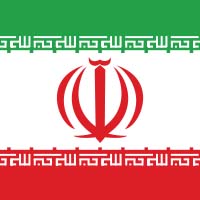

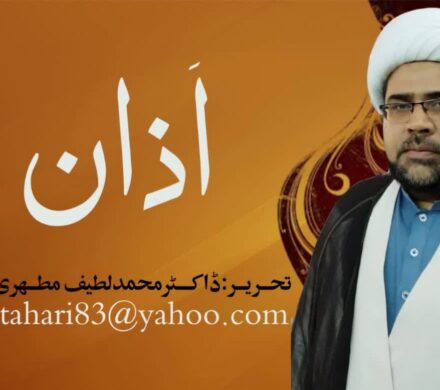
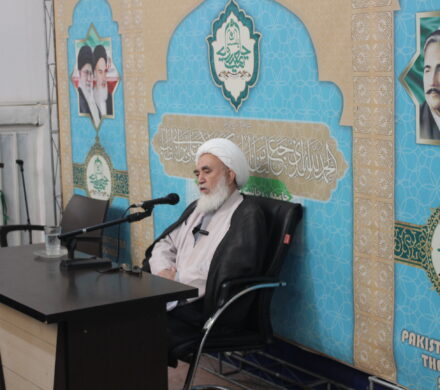
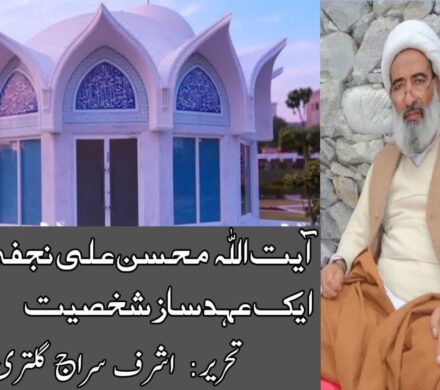
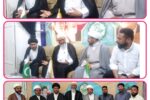


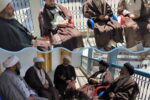
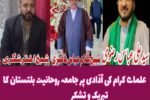
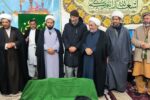

دیدگاهتان را بنویسید